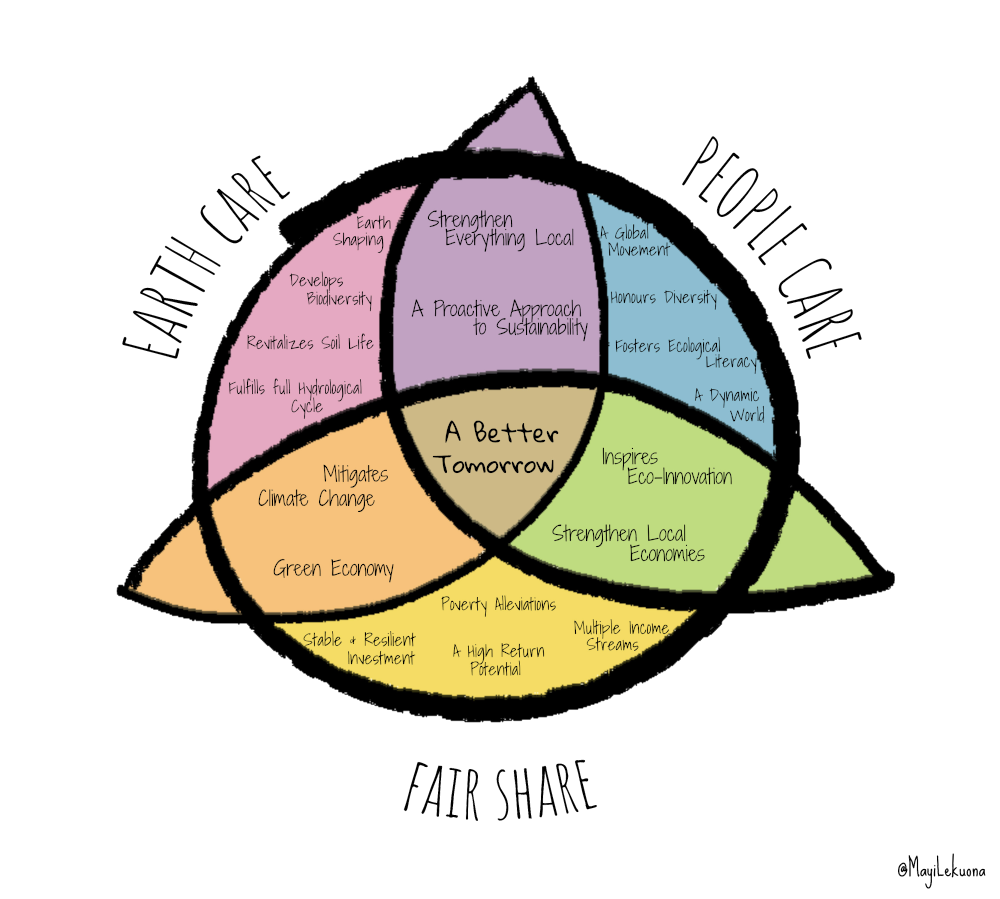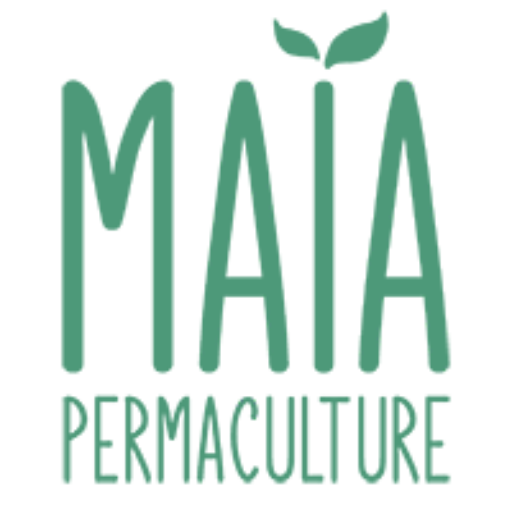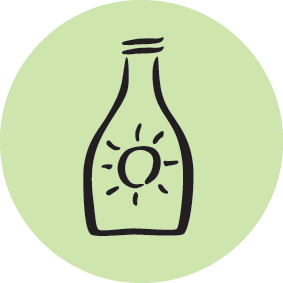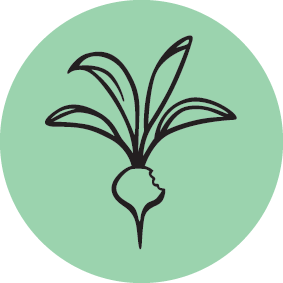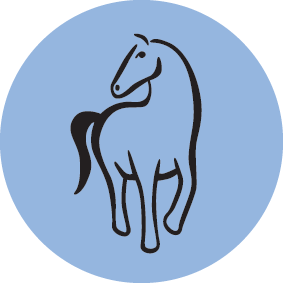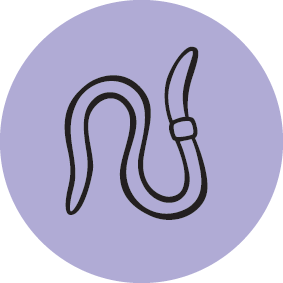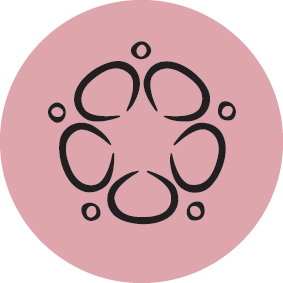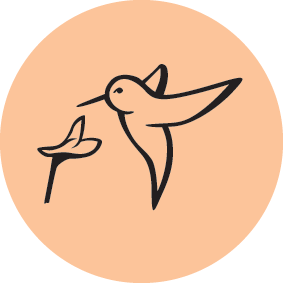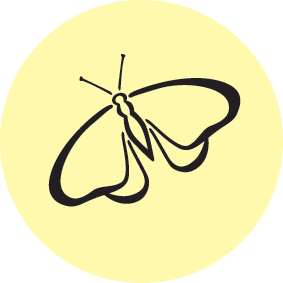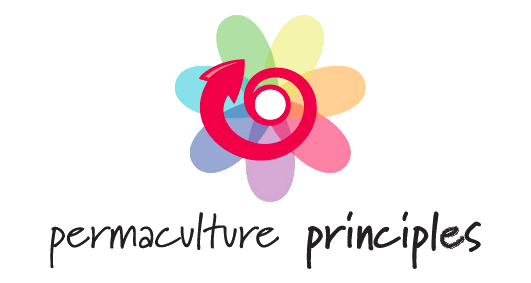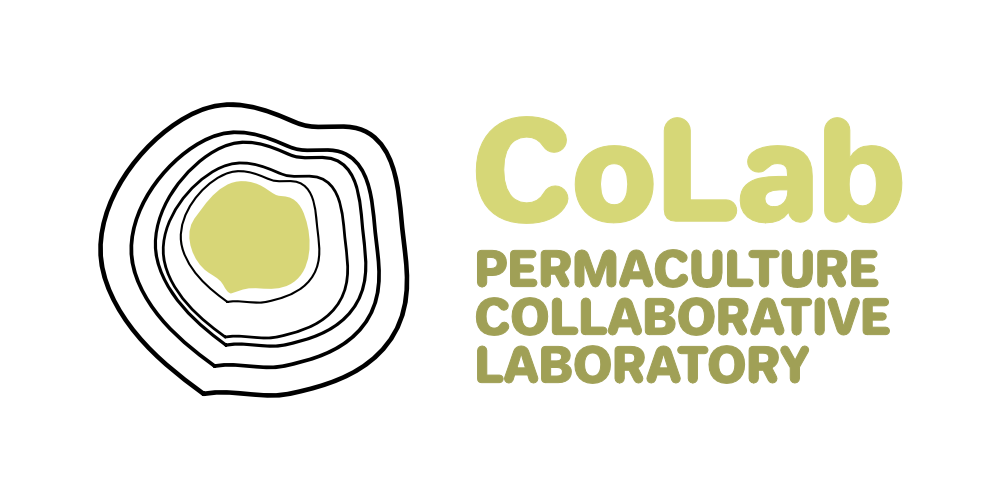WHAT IS PERMACULTURE?
DEFINITION
Permaculture was created in the 70’s by Australians Bill Mollison & David Holmgren as a positivistic response to environmental crisis. Much of their speech wasn’t new, since this thinking was common in our ancestor’s wisdom but our civilization had long set aside those ideas for a model of eternal unrealistic growth.
In the beginnings, the word permaculture came from “permanent agriculture”, but this definition has since been updated as “permanent culture” since permaculture is not only an agricultural matter, even if it is often associated to edible gardening.
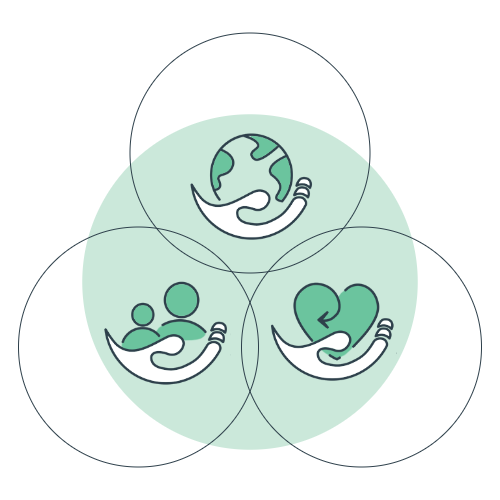
But, what is Permaculture?
Permaculture is a set of decision-making tools based on natural systems, for arriving at regenerative solutions to design challenges of all kinds. Its central aim is to reduce our ecological impact or more precisely to turn our negative ecological impact into a positive one (Patrick Whitefield).
Permaculture is a design system for ecological and sustainable living, integrating plants, animals, buildings, people and community, centered around 3 main ethics : Earth Care, or rebuild nature’s capital, People Care, or care of self, kin and community & Fair Share or set limits to consumption and reproduction, and redistribute surplus.
PRINCIPLES
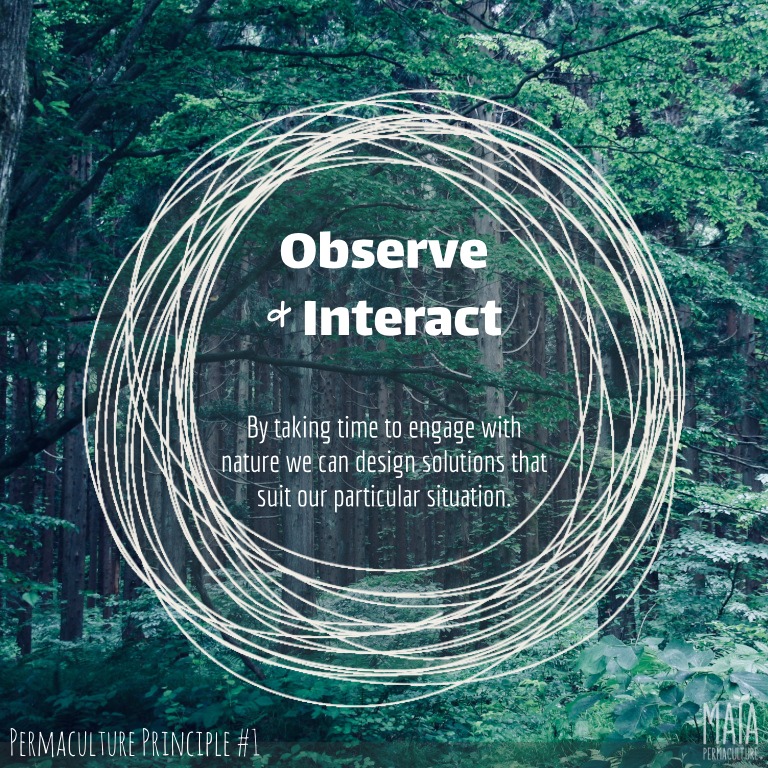
Observe & Interact
Permaculture design is based on careful observation, gathering information and experiences to promote understanding of nature, the landscape and the people involved. Observation helps us find the most adaptable solution. Do not underestimate this principle and take time to observe before changing anything!
Catch & Store Energy
We should design any system to provide self-reliance at all levels by using captured and stored energy effectively to maintain the system and capture more energy. Solar energy, wind energy, biomass, run-off water, nutrient and carbon storage in the landscape, but also human capital, knowledge, motivation are different types of energy you need to take into account. Think about all the sources of energy in your design. How can you take the waste products of one system and turn them into the resource of another one? Try to close the loops!
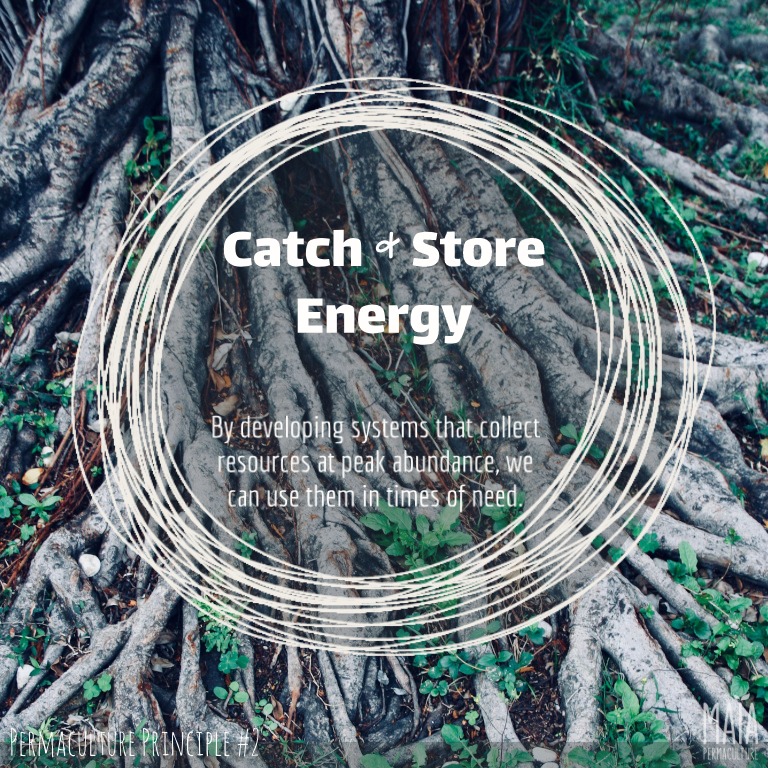
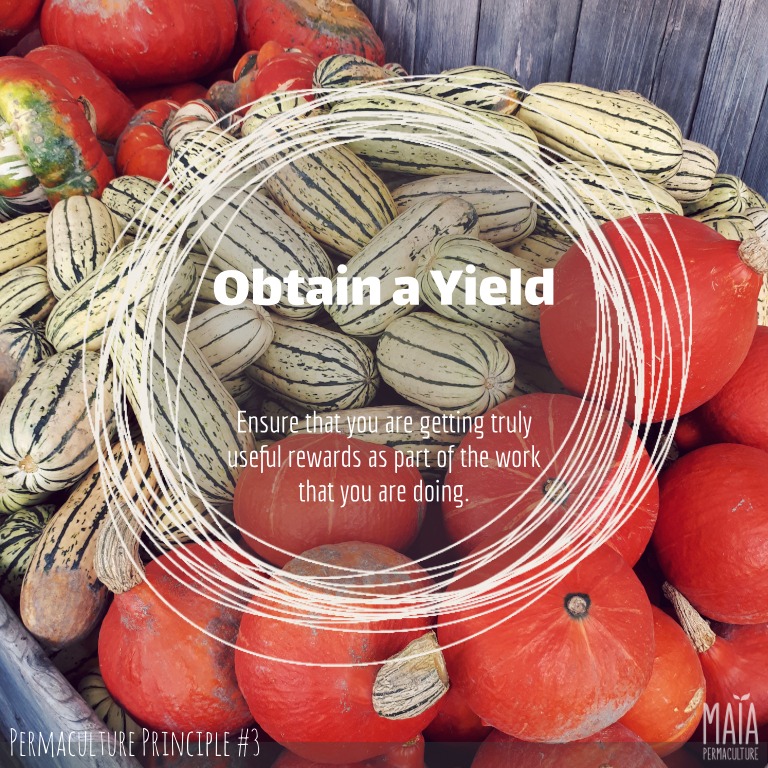
Obtain a Yield
Plan for the harvest! Make sure to recognize all the yields that your systems provide and take advantage of them when you can; even yields that do not have direct economic value such as carbon sequestration, aesthetics and wildlife habitat (for example, compost is a yield of cooking that you can use in your garden).
Apply Self-regulation & Accept Feedback
The Earth is the perfect example of a system that self-regulates. Design systems that are more self-regulating, thus reducing the work involved in repeated and harsh corrective management. Limit and discourage innapropriate growth or behaviour.
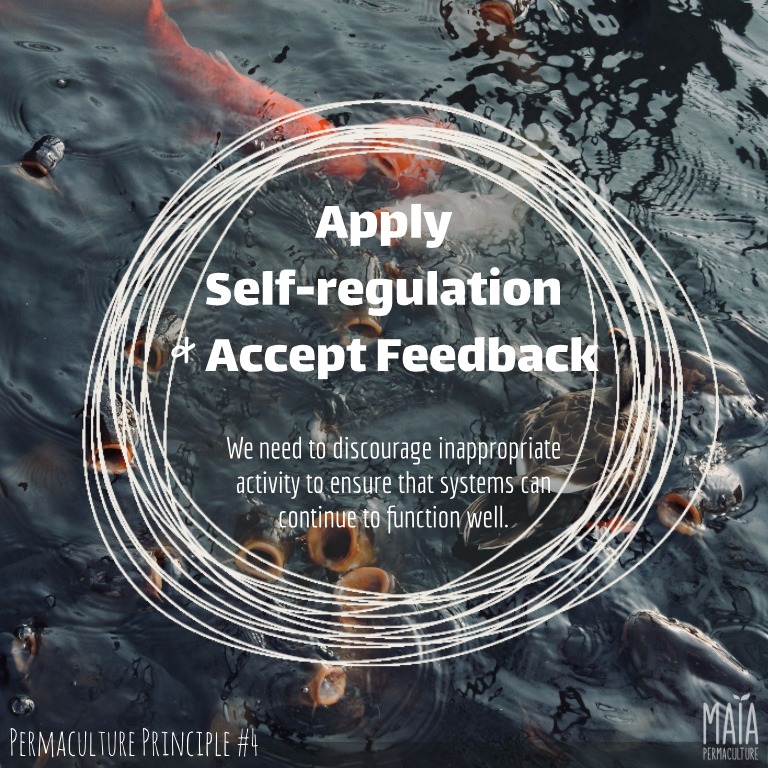
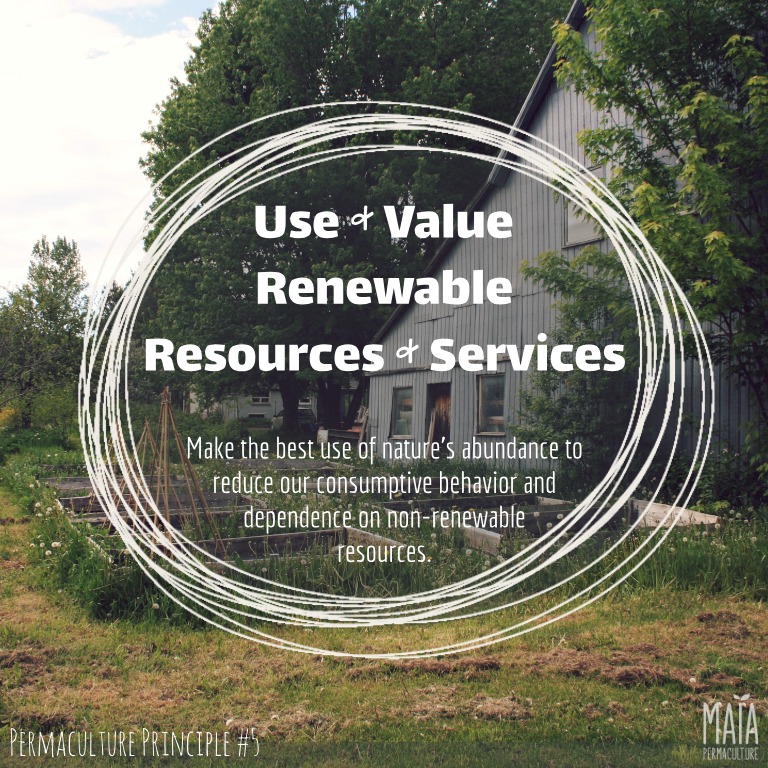
Use & Value Renewable Resources & Services
Permaculture design makes best use of non-consuming natural services to minimize our consumptive demands on resources and emphasize harmonious possibilities of interaction between humans and nature. These resources and services are used only within their natural limits so they do not become depleted. Using biological resources such as mulch, we not only reduce our plastic consumption, but we also add new organic matter to the soil, maintain the ground humidity and feed the soil microbiome.
Produce No Waste
Unused surplus is waste. Products that are waste in one system, can be used in another system. So, close the loops and don’t forget the 5 Rs: Refuse, Reduce, Reuse, Repair, Recycle.
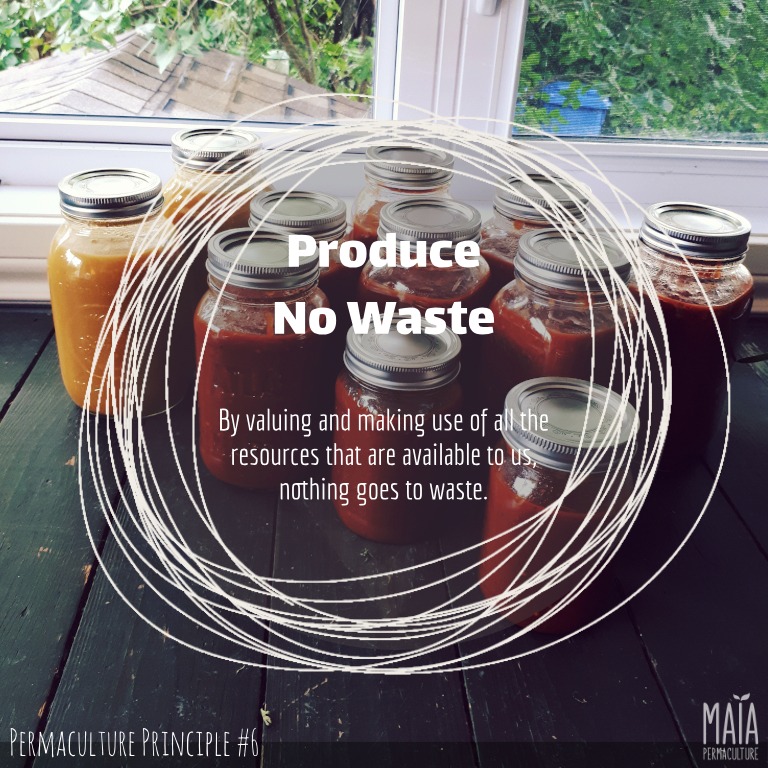
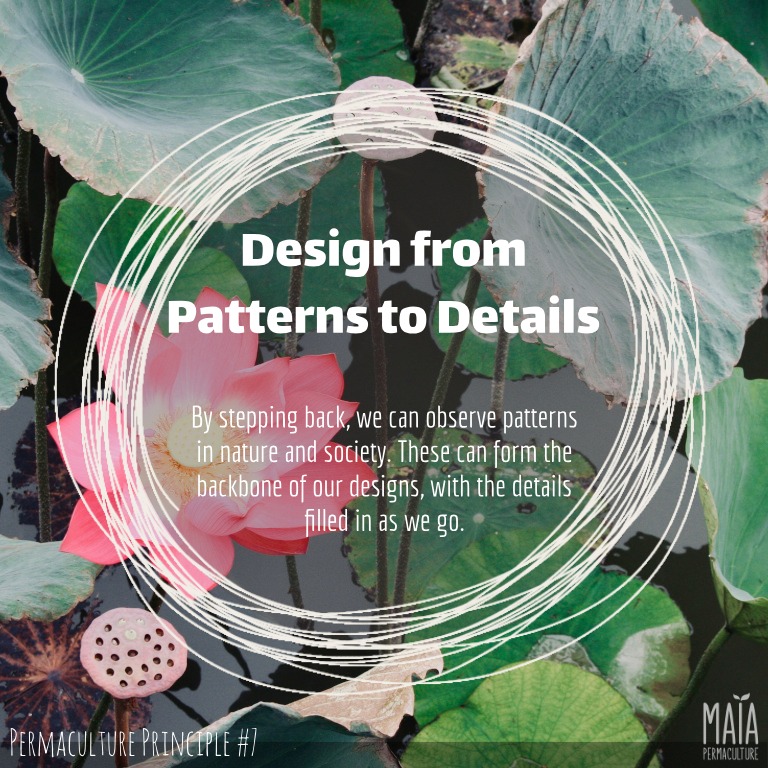
Design from Patterns to Details
Patterns in nature provide a broad, inspiring picture of a great field of potential applications in permaculture design. When designing, it is important to start with a pattern as a backbone and then enrich the design with details.
Integrate rather than Segregate
” Each element performs many functions and each important function is supported by many elements”.
The purpose of a functional and self-regulating design is to place elements in such a way that each serves the needs and accepts the products of other elements. Try to find a place for each part and to create relationships of support and cooperation.
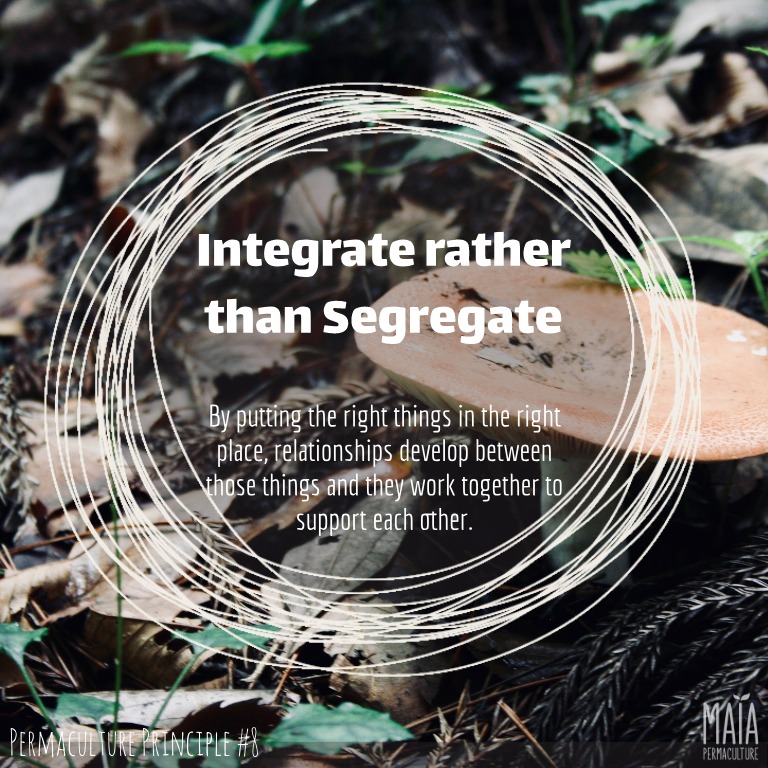
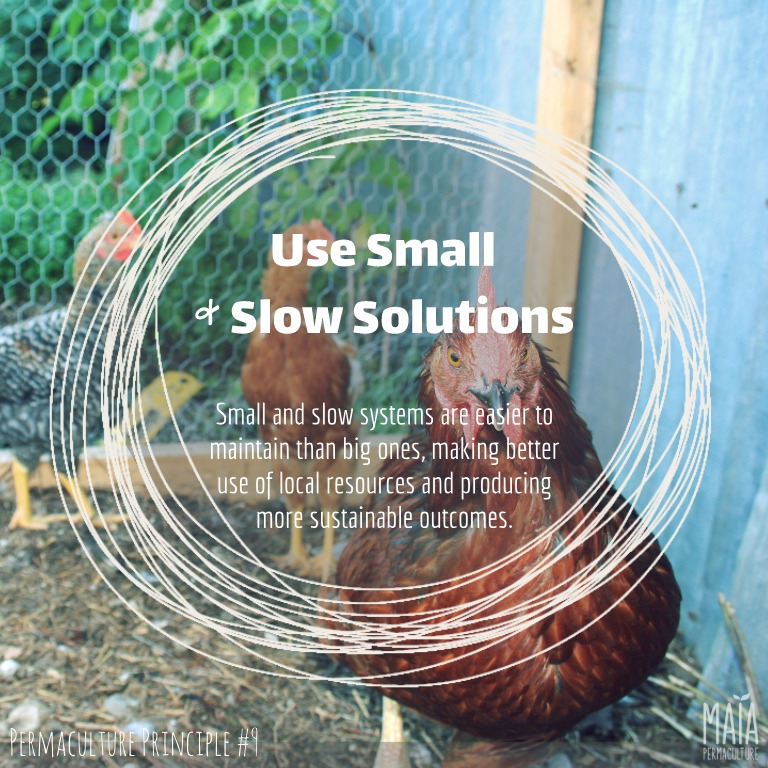
Use Small & Slow Solutions
Systems should be designed to perform functions at the smallest scale that is practical and energy-efficient for their function. Small scale solutions and activities are more likely to be adaptive to local needs, respectful of nature and able to see the consequences of actions. Simple is better!
Use & Value Diversity
Diversity is the basis of thriving natural systems and provides a dynamic and interesting expression of resilient life. Diverse systems have more potential for functional interconnection, more potential yields and improved ability to withstanding losing any element. Increase biological and cultural diversity!
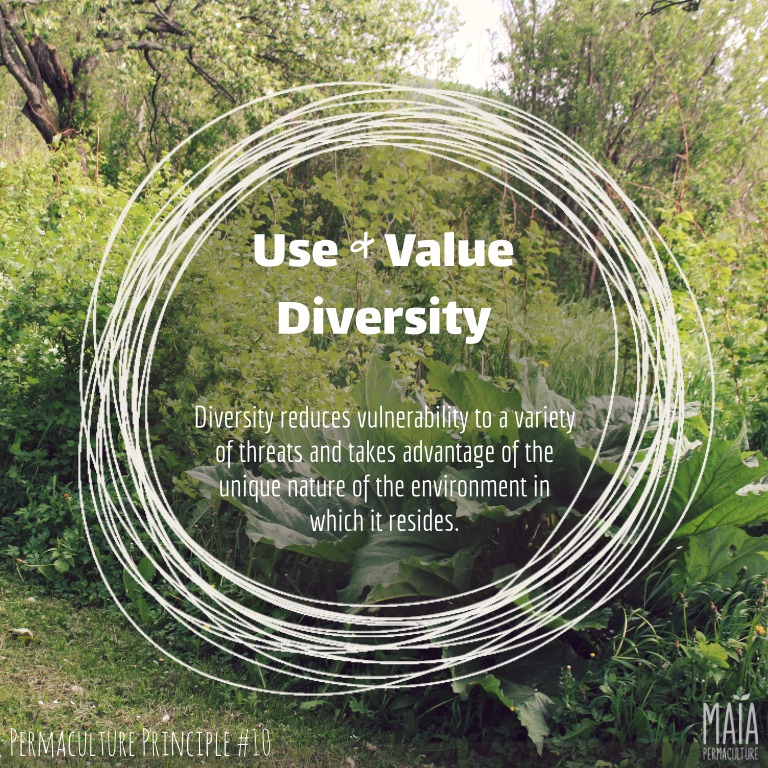
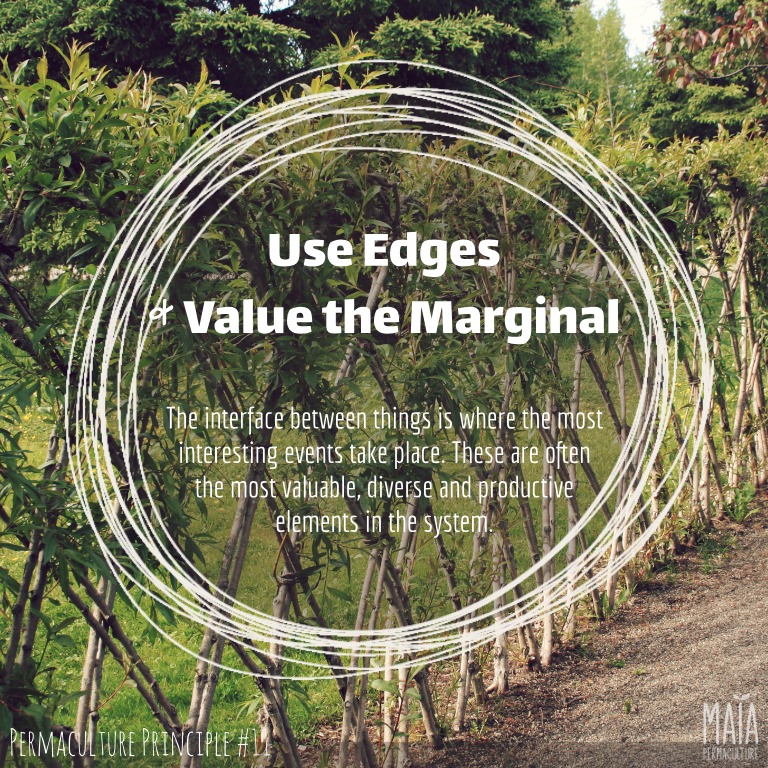
Use Edges & Value the Marginal
Where too systems meet, a greater diversity of life forms flourish, thus the edges are fertile dynamic places. Don’t underestimate them, include them in your design!
Creatively Use & Respond to Change
Long-term sustainability requires flexibility and adaptation by ecosystems, in our own lives and of whole cultures. Be resilient and think outside the box: the problem is the solution!
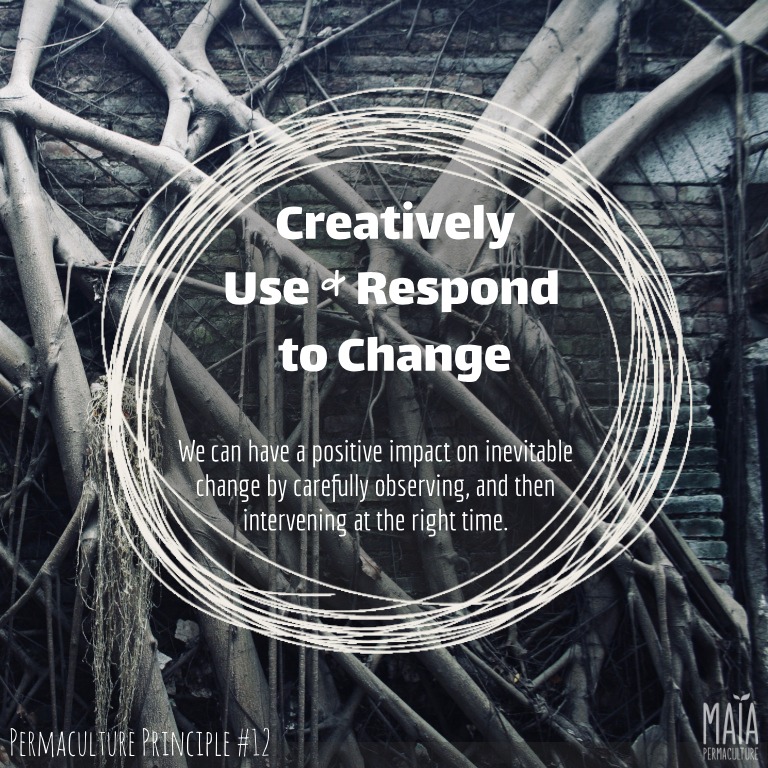
“By adopting the ethics and applying these principles in our daily life we can make the transition from being dependent consumers to becoming responsible producers. This journey builds skills and resilience at home and in our local communities that will help us prepare for an uncertain future with less available energy.”
David Holmgren
